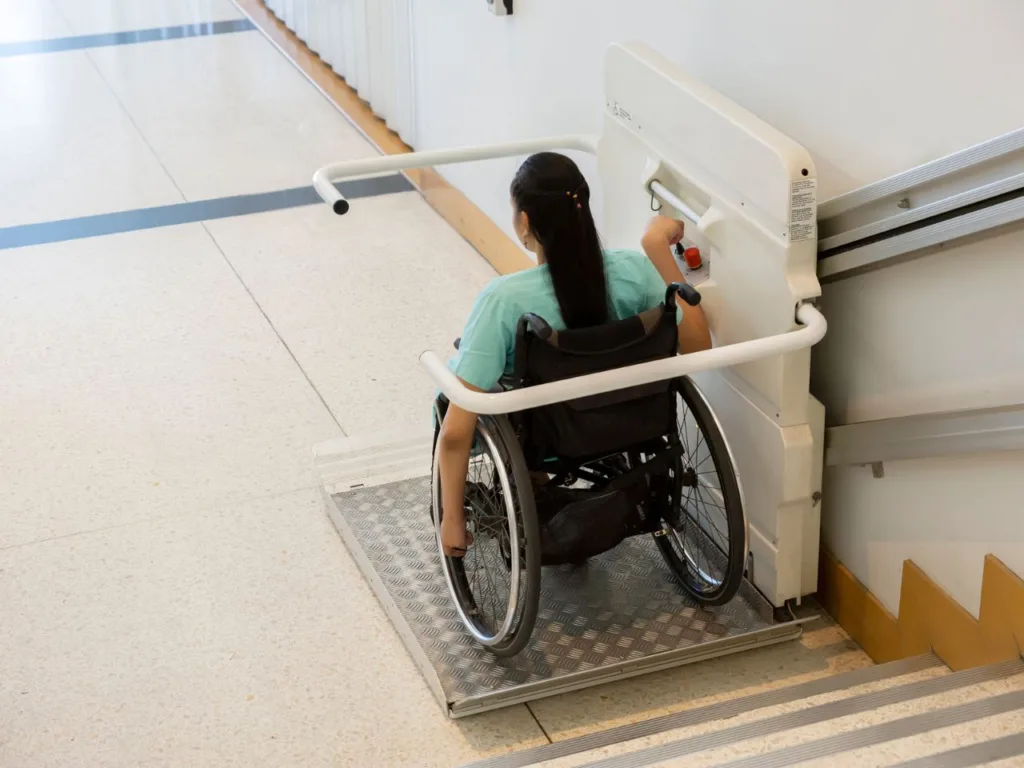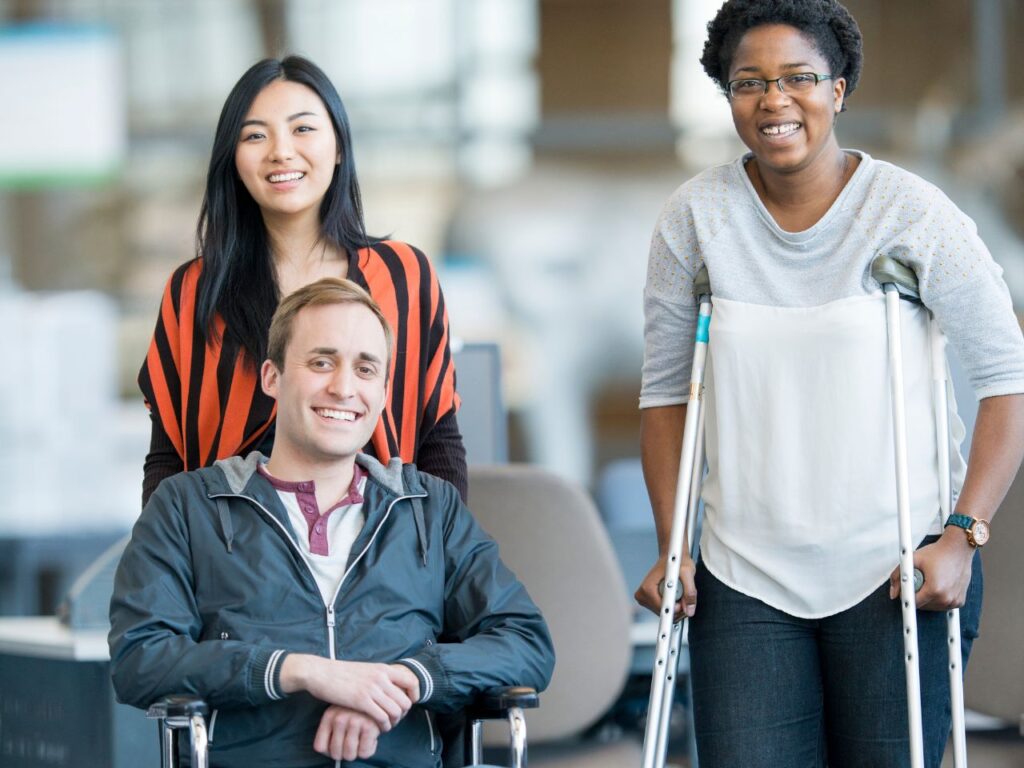Updated on August 20, 2024

The language we use to describe people with disabilities impacts their perceptions and experiences.
Over time, society’s understanding of disability has evolved, and so has the language we use to discuss it. Today, it is important to adopt inclusive and respectful language that accurately reflects the diversity of the disability community.
The way we talk about disabilities is not just about being politically correct; it’s about recognising and honouring the dignity of every person. Here we explore the best way to refer to people with disabilities, highlighting the importance of using respectful and inclusive language.
What is Disability Language?
The language used to describe disabilities has evolved over the years. Where once derogatory and limiting terms were commonplace, there is now a greater emphasis on language that respects the individuality and humanity of people with disabilities.
Historically, terms like “crippled” or “handicapped” were used, reflecting a societal view that saw disabilities primarily as limitations or deficits. As our understanding of disability has evolved, so too has our language. Today, there is a stronger emphasis on terminology that recognises the person first, rather than defining them by their disability.
Person-First vs Identity-First Language
One of the key debates in disability language revolves around using person-first versus identity-first language.
Person-first language emphasises the person before their disability, like saying “person with a disability” rather than “disabled person.” This approach promotes the idea that a person is not defined by their disability and seeks to prioritise their identity as a person.
For example, saying “deaf person” instead of “person who is deaf” or using “person with autism” rather than “autistic person” acknowledges the person beyond their diagnosis. This approach has been widely adopted, particularly in medical and educational settings, as it aligns with treating people with disabilities as people, not defined by a single trait.
On the other hand, identity-first language, such as “disabled person,” is preferred by some people and communities because it recognises disability as an integral part of their identity.
For many, disability is not something separate from their identity but a core part of who they are. This approach challenges the notion that disability is inherently negative and instead embraces it as a significant aspect of one’s experience.
Both languages are valid, and there’s no right or wrong. What’s important is knowing personal preferences and avoiding assuming which language style is appropriate for everyone. Always ask how they prefer to be referred to.
Avoiding Stigmatising Language and Embracing Inclusivity
Stigmatising language can be harmful and perpetuate negative stereotypes about people with disabilities.
It’s essential to avoid using outdated, offensive, or dehumanising terms. Some examples of stigmatising language include “handicapped,” “crippled,” and “invalid,” or referring to people with disabilities as “victims” or “suffering.”
Instead, use respectful and accurate language that focuses on the person and their abilities rather than limitations. It avoids generalisations and stereotypes, promoting a positive and respectful image of disability.
For example, instead of saying “confined to a wheelchair,” use “uses a wheelchair for mobility.” This language emphasises the person’s independence and agency.
Below is a table that lists commonly used terms related to disability alongside their preferred alternatives:
| Commonly Used Terms | Preferred | Explanation |
| Handicapped | A person with a disability | Handicapped” is outdated and can be viewed as derogatory. “Person with a disability” is more respectful and accurate. |
| Wheel Chair Bound | A person who uses a wheelchair | Wheelchair-bound” implies restriction. The alternative focuses on the wheelchair as a tool for mobility. |
| Suffers from | Lives with | Suffering from” suggests ongoing misery. “Lives with” is neutral and avoids negative connotations. |
| Mentally ill | A person with a mental health condition | Mentally ill can be stigmatising. The alternative is more inclusive and respectful. |
| Crippled | A person with a physical disability | “Crippled” is an offensive term. The alternative is more respectful and avoids negative implications. |
| Deaf and Dumb | Deaf or hard of hearing | Deaf and dumb” is outdated and offensive. “Deaf” or “hard of hearing” are accurate and respectful terms. |
| Insane, crazy, maniac | A person with a psychosocial disability | These terms are derogatory and stigmatizing. “Person with a mental health condition” is neutral and respectful. |
| Midget/Dwarf | A person of short stature or a person with dwarfism | Midget” and “dwarf” are considered offensive. “Person of short stature” or “person with dwarfism” is more appropriate and respectful. |
| Disabled or handicapped parking | Accessible Parking | Disabled” or “handicapped” parking can reinforce stereotypes. “Accessible parking” is a more inclusive and positive term. |
| Mute | Non-verbal | “Mute” can be seen as offensive. “Nonverbal” is more accurate and respectful. |
How to Approach Conversations About Disability
When discussing disability, it’s essential to approach conversations with respect, sensitivity, and a willingness to listen. Here are some strategies to keep in mind:
- Listen and Learn: The best way to understand how someone prefers to be referred is by listening to them. Everyone’s experience with disability is unique, and their language preferences may vary.
- Ask When Unsure: If you’re unsure about the correct terminology or how to refer to someone, it’s okay to ask. Most people appreciate the effort to get it right and will gladly share their preferences.
- Avoid Assumptions: Don’t assume that a person’s disability defines their identity or experience. Allow people to define themselves on their terms.
- Be Open to Feedback: Language constantly evolves, and mistakes can occur. Be open to feedback and willing to adapt your language as needed.
Conclusion
Using respectful and inclusive language when referring to people with disabilities is not just about being politically correct; it’s about acknowledging and respecting their humanity.
As our understanding of disability continues to evolve, so should our language. By staying informed, listening to their preferences, and committing to using inclusive language, we can all contribute to a more inclusive and understanding society. Let’s choose our words carefully, recognizing their power in shaping how we view and treat one another.
Sources
- https://www.ungeneva.org/sites/default/files/2021-01/Disability-Inclusive-Language-Guidelines.pdf
- https://www.forbes.com/sites/andrewpulrang/2020/09/30/here-are-some-dos-and-donts-of-disability-language/
- https://adata.org/factsheet/ADANN-writing
- https://disability.stanford.edu/sites/g/files/sbiybj26391/files/media/file/disability-language-guide-stanford_1.pdf
- https://www.gov.uk/government/publications/inclusive-communication/inclusive-language-words-to-use-and-avoid-when-writing-about-disability
- https://www.apa.org/pi/disability/resources/choosing-words
MORE FROM CENTRE DISABILITY SUPPORT



